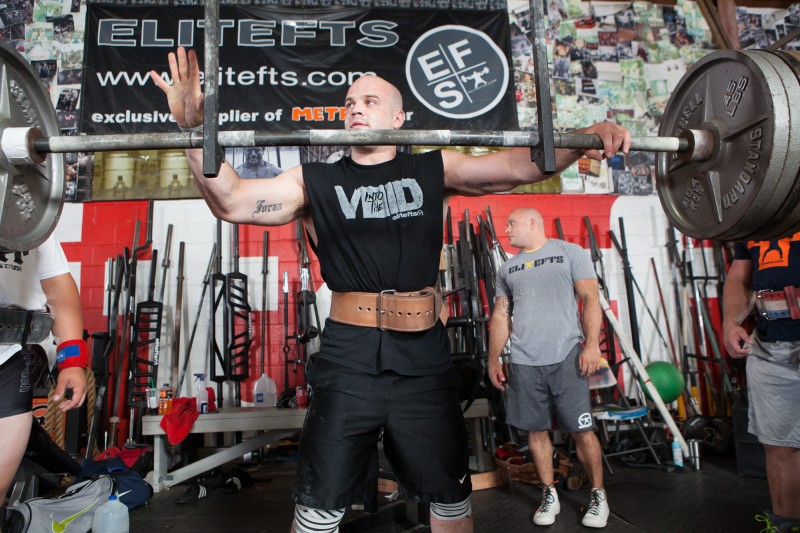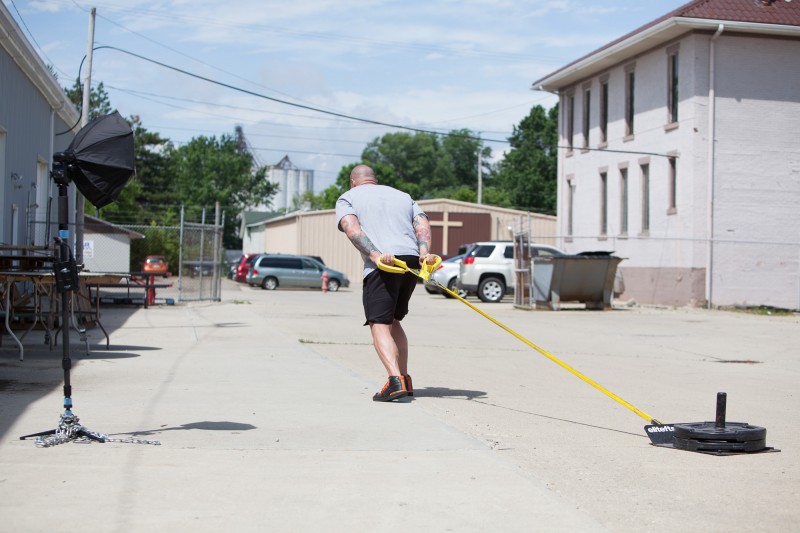
To truly understand conditioning, you must first understand the different energy systems that the body utilizes. The purpose of this article is to break down these different systems so that you can then have a better idea of how to program appropriately for yourself and/or your clients.
Before we get into these energy systems, first let’s talk about Adenosine Triphosphate (ATP). Think about ATP as your body’s currency for producing energy. The body uses ATP for every human function. That goes for everything from typing this article to running a 100-meter sprint, to a mixed martial arts fight, to walking, and everything in between.
RELATED: Conditioning Without Running
The more intense the activity, the more ATP is required.
Once ATP is expended, more must be replenished. The body has three systems to replenish ATP:
1. ATP-PC system
2. Glycolytic pathway
3. Oxidative phosphorylative pathway
Let’s take a look at each…
The ATP-PC system (or Adenosine Triphosphate Phosphocreatine system) is an anaerobic energy system used to produce ATP, which means oxygen is not used for the production of ATP.
This is the system that is primarily responsible for short-duration, explosive exercise. It produces ATP very quickly and effectively but cannot keep up this pace of ATP production for very long. Generally, this system is used for intense bouts of exercise up to 10 seconds, give or take. Think of a 100-meter sprint, power clean, max effort squat, etc.

The glycolytic pathway is also anaerobic (when there isn’t enough oxygen available) but is different from the ATP-PC system (I’ll explain this in a bit more detail a little later on). This system breaks down glucose and glycogen (stored glucose) to produce ATP. Because glucose is broken down to produce ATP, lactic acid (a byproduct of that process) is produced. This system isn’t as fast as the ATP-PC system is, but it lasts quite longer—generally up to about 60-90 seconds after the ATP-PC system becomes depleted. A good example here is the 400-meter sprint. This system kicks in once the ATP-PC system has been depleted.
The oxidative phosphorylative pathway is aerobic, which means it uses oxygen to produce ATP. This system cannot produce ATP nearly as quickly as the first two systems can; however, it can keep up the production of ATP for hours. It’s the system we use for practically all of our day-to-day activities. Good examples of exercise that target this system would be walking, running a 5K or a marathon, and other events similar in nature.
Earlier, I mentioned that the ATP-PC system and the glycolytic pathway are both anaerobic, but there is a difference between the two beyond the duration in which they are used.
The ATP-PC system is anaerobic alactic, which means that the process of producing ATP in this system does not use oxygen and does not produce lactic acid.
The glycolytic pathway is anaerobic lactic, which means that this energy system does not use oxygen but does produce lactic acid as a byproduct of converting glucose to pyruvate in a process called glycolysis.
If you train athletes (or are one yourself), this stuff is important for obvious reasons, like proper preparation so that you or your athlete can excel in sports.
But understanding these systems is important even if you’re working with the general population for reasons like:
- Fat loss
- Hormonal production
- Developing or maintaining power output
- Ability to recover
- Optimizing your client’s training based on his or her goals and lifestyle factors
- Health and longevity
And more, as if that weren’t enough.
Now, let’s move on to talk about why each energy system would be trained.
The ATP-PC or Anaerobic Alactic System
Training in a way that utilizes this energy system is where we develop maximal strength, speed, and power.
From a longevity standpoint, the maintenance of strength and power is important as you age, but due to the intensity of exercise done to target this energy system, there is an added benefit of the anabolic hormones produced from the intense exercise.
These hormones are vital for things like maintaining strength and lean mass, fat loss, sex drive, and longevity, to name a few.
The Glycolytic Pathway or Anaerobic Lactic System
This system is important for sport demands that require speed and explosiveness for extended periods.
The downside of training this energy system is that most of the general population utilizing the methods to target it aren’t prepared for the demands and added stress from this kind of activity.
The exercise demand for targeting this system is very stressful. Done too often and chronically, it becomes very difficult to recover from, thus leading to chronic fatigue and overtraining.

To utilize the training methods to target this energy system, you must have a solid aerobic base and the required strength to tap into this system effectively.
That doesn’t make this energy system “bad,” by the way. It’s just important to know when to target it and why you’re targeting it in the first place.
Oxidative Phosphorylative Pathway or Aerobic System
Your aerobic capacity will affect your other energy systems due to the enhanced recovery capabilities that a strong aerobic system can create.
The greater your aerobic capacity, the better you’ll be able to recover from exercise (in between sets and from training sessions in general).
Greater aerobic capacity has also been correlated with a longer lifespan and better cardiovascular health.
So, regardless if you’re a meathead, athlete, or fitness enthusiast, it’s important to spend some time working on recovery and restoration, as well as build your aerobic capacity.
To do this, spend some time in the Zone 1 and Zone 2 heart rate ranges. If you’re not sure what I’m talking about, check this.
First, find your max heart rate (MHR). A simple formula for estimated MHR is 220 minus your age. So, if you’re 40, your estimated max heart rate is 180 BPM.
There are five heart rate zones.
Zone 1: 50-60% MHR
Zone 2: 61-70% MHR
Zone 3: 71-80% MHR
Zone 4: 81-90 % MHR
Zone 5: 91-100% MHR
So, using the same 40-year-old example, staying in the range of Zones 1 and 2 will require a heart rate ranging of 90 to 126 BPM.
Training in the Zone 1 range for 20-40 minutes is great for restoration and recovery, whereas spending 40-60 minutes in Zone 2 is better for building your aerobic capacity.
It’s really important to have a general understanding of these energy systems, especially if you’re working with other people. This stuff is way more complex and complicated than the information in this article, and I certainly don’t claim to be a scientist, but I wanted to give you a general idea and a clear starting point on which you can expand.
Hopefully, the brief description of each energy system has given you a better idea of how the body works and produces energy.
With everyone constantly pushing the envelope with tons of volume and intensity for extended periods, I felt that it was important to shed some light on this topic to slow down the burnout and chronic fatigue we’re seeing these days.
If you have any questions for me, feel free to drop a comment below or shoot me a DM on Instagram @chris_tutela
Thanks so much for reading.











And if you do that in a sport specific way, like loaded carries, even better.